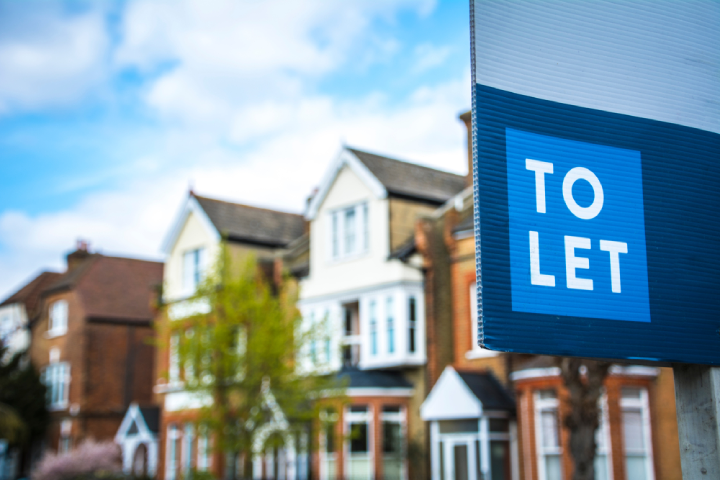
In 2023, for the first time, properties outside the capital surpassed the average of £1,000 per month, according to a new report published by Hamptons. It outlines the rise in rent prices in the UK, especially focusing on the areas outside of London.
This rise corresponds to an extra 26% in rent prices outside of the capital since before the pandemic and an extra £868 in rent per year compared to 2022.

Due to a combination of factors, in particular the lack of housing, it does not look as if rent rates are going to drop any time soon.
What is the average monthly rent outside of London?
The report shows that among the ten regions outside of the capital, three have seen rents exceed £1,000 a month:
- East of England
- South West
- South East
A decade ago, in 2013, the average rent in areas outside of London was £677. August 2021 saw the £900 per month milestone being surpassed; since then, April 2023 recorded a 11.1% year-on-year increase in the UK as an average since 2021.
In April 2023, monthly rents across the UK reached a new record of £1,249, the second-highest month for rental growth, only beaten by the 11.5% increase seen in May 2022.
Since the beginning of the pandemic, Hamptons reports that UK cities have registered a 25% increase in the average rental prices, equating to an extra £2,962 per year.
What is the average monthly rate in London?
According to the Hamptons report, in April 2023, the average rent for a newly-let property in London reached £2,210 per month, 17.2% higher than in April 2022. This means that a record has been broken by London as well, as it has exceeded the £2,200 average rent mark for the first time too, resulting in an additional £3,895 per year for the average tenant. Big Issue reports that 66% of renters in London will likely see a rent increase in the near future.
The difference between inner (12 boroughs of Camden, Greenwich, Hackney, Hammersmith and Fulham, Islington, Kensington and Chelsea, Lambeth, Lewisham, Southwark, Tower Hamlets, Westminster, and Wandsworth) and outer London (the other 20 boroughs) is significant as well. Average monthly rent in inner London stands at around £3,138, which is a 24.9% increase compared to 2022.
Outer London, on the other hand, has seen a 15.1% year-on-year growth in April 2023, with the average rent exceeding £2,000 per month for the first time since November 2022.
This has widened the gap between inner and outer London even more, which went up to £1,104, or 54%, compared to June 2021.
Why are rent prices in the UK so high?
Put simply, UK rents are high because there is a shortage of affordable housing. The UK is living through a housing crisis, amplified by the fact that not enough homes have been built. Additionally, many buildings that were formally social housing have been rented out by the private sector following purchases through schemes like Right to Buy, while others have been demolished and not rebuilt.
An estimate drafted by the National Housing Federation (NHF) and Crisis from Heriot-Watt University showed that around 340,000 new homes should be made available in the UK every year and at least 145,000 should be deemed affordable in order to overcome this crisis.
However, in 2021, only 216,000 homes were supplied and the Home Builders Federation calculated that less than 120,000 homes are going to be built in 2023, which is less half than of the Government’s target of 300,000 by mid-2020s.
May 2023 marked the introduction of the Renters Reform Bill, which aims to improve the communication and rights system for both parties: the 11 million renters and the 2.3 million landlords in England.
Anny Cullum, ACORN Renters Union’s Policy Officer, told City Monitor: “While the Renters Reform Bill introduced to Parliament last week is a major step towards security and good standards for England’s 11 million renters, it fails to address the growing crisis of the lack of affordable homes.”
Today, the housing demand still exceeds supply. Rightmove, for instance, reported that the number of tenants inquiring about a property on the website is 4% higher in 2023 than it was in 2022 and a staggering 48% higher than 2019 levels.
Cullum said: “We’re seeing some landlords cashing in on the situation and hiking rents, and some letting agents encouraging ‘bidding wars’ to encourage prospective renters to bid against each other above advertised rates.
“This is artificially inflating rents and is contributing to this situation where people are being priced out of the communities where they have lived all of their lives, and it’s making people homeless.”
Due to this shortage and high demand combination, it is likely that renters all around the UK will see a dramatic increase in prices, as shown by the Hamptons report. Cullum concluded that “ultimately, it is only through building enough good quality social homes that we will break the dependency on the unsuitable private rental sector and bring down these unsustainable increases and to make sure everyone has a safe, secure and affordable home”.
[Read more: How much can landlords increase the rent?]






